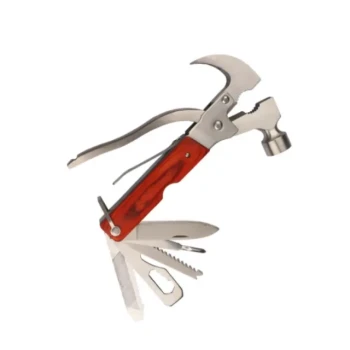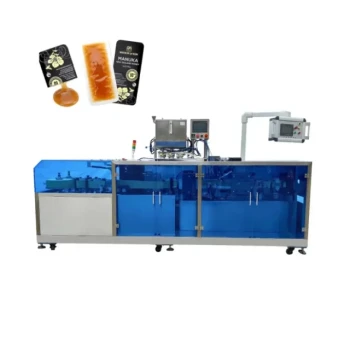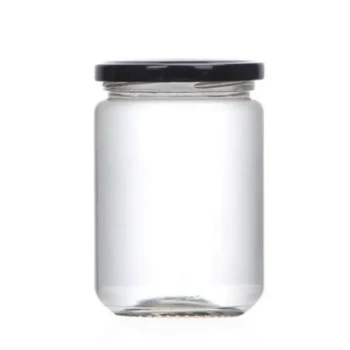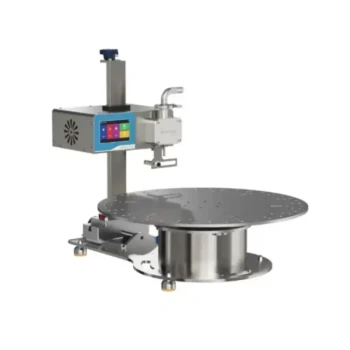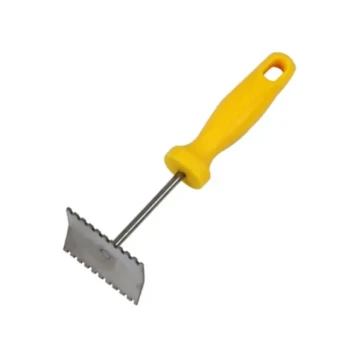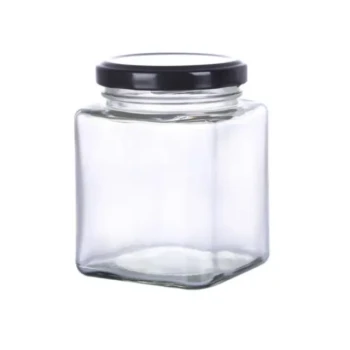In beekeeping, the term 'nectar shake' is a direct and visceral indicator of your colony's success. It refers to the moment a beekeeper pulls a frame from a hive and, with a gentle shake, sees fresh, uncured nectar rain out from the comb's cells. This means your bees are actively collecting a surplus of nectar from an abundant local source.
Observing a 'nectar shake' is more than just a satisfying sign of a busy hive; it is a critical signal that a strong nectar flow is underway, requiring immediate management decisions to prevent swarming and maximize honey production.
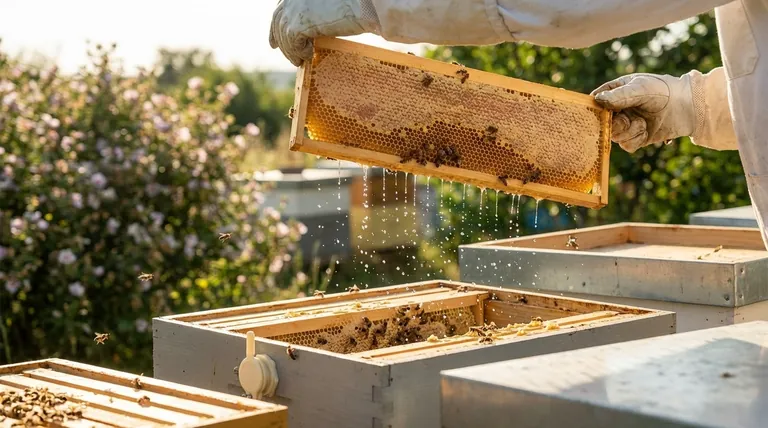
What a Nectar Shake Reveals About Your Hive
A nectar shake is one of the most reliable real-time indicators available to a beekeeper. It provides a clear snapshot of the environment outside the hive and the colony's response to it.
The Signature of a Strong Nectar Flow
The ability to shake fresh nectar from the combs is the definitive sign of a nectar flow. This is a period when one or more major floral sources are blooming profusely, providing the bees with more nectar than they need for their immediate daily consumption.
This influx is so rapid that the bees are placing the watery nectar in any available cell, working quickly to bring in as much as possible while the source is available.
The Uncured State of Nectar
The reason nectar shakes out is its high water content. Freshly gathered nectar can be up to 80% water. It is thin and lacks the viscosity of cured honey.
Bees must ripen this nectar by adding enzymes and fanning their wings to evaporate the moisture down to about 18%. Only then does it become thick honey, which they cap with wax for long-term storage.
Why This Observation Is Critical for Management
Seeing a nectar shake is a call to action. While it signals a productive and healthy colony, it also warns of potential challenges that require your intervention.
Preventing a "Honey Bound" Colony
If the nectar flow is intense, bees will fill every available cell with fresh nectar, including the cells in the brood chamber. This is known as becoming honey bound.
When this happens, the queen runs out of space to lay eggs. A halt in egg-laying can shrink the colony's future population and, more urgently, can trigger the hive's instinct to swarm.
The Immediate Need for Space
A nectar shake is your cue to add more supers. Supers are the hive boxes placed above the brood chamber specifically for honey storage.
Providing this extra space gives the bees room to store the incoming nectar, keeping the brood nest open for the queen. Failing to add supers in time is one of the most common mistakes that leads to reduced honey harvests and unnecessary swarms.
Understanding the Broader Context
Not all hive inspections will produce a nectar shake. Its presence—or absence—tells a story about the season and the health of your local environment.
Nectar Shake vs. Capped Honey
A nectar shake indicates the beginning of the honey-making process. The nectar is not yet honey and is not ready for harvest.
Capped honey, in contrast, is the finished product. It will not shake from the comb because it is dense, ripe, and sealed with a beeswax capping for preservation.
The Meaning of Its Absence
If you expect a nectar flow but do not observe a nectar shake, it could be a sign of a problem. This might indicate poor weather limiting foraging, a lack of local floral sources (a nectar dearth), or a potential issue with the colony's health or population size.
How to Respond to Your Observation
Your actions following a hive inspection should be guided by what you see. The nectar shake is a clear and unambiguous signal.
- If your primary goal is maximizing honey harvest: Immediately add one or more honey supers to provide ample storage space.
- If your primary goal is swarm prevention: Check that the brood chamber is not becoming honey bound and add supers to give the incoming nectar a dedicated place.
- If you are monitoring colony health: Use the nectar shake as confirmation that the colony is strong and the local environment is providing abundant resources.
Observing the details within the hive, like a simple nectar shake, is the key to proactive and successful beekeeping.
Summary Table:
| Observation | What It Indicates | Required Action |
|---|---|---|
| Nectar Shake Present | Strong nectar flow; bees are actively collecting surplus. | Add honey supers to prevent swarming and maximize harvest. |
| Nectar Shake Absent | Possible nectar dearth, poor weather, or colony health issue. | Investigate forage sources and assess colony strength. |
| Capped Honey Present | Nectar is fully cured and ready for harvest. | Plan for honey extraction. |
Is your apiary ready for the next nectar flow?
A nectar shake signals it's time to act. Ensure your operation is equipped to maximize every honey harvest. HONESTBEE supplies commercial apiaries and beekeeping equipment distributors with the durable, high-volume supplies needed to manage strong flows efficiently—from robust honey supers to essential hive tools.
Let's discuss your wholesale needs. Contact our team today to optimize your beekeeping productivity.
Visual Guide
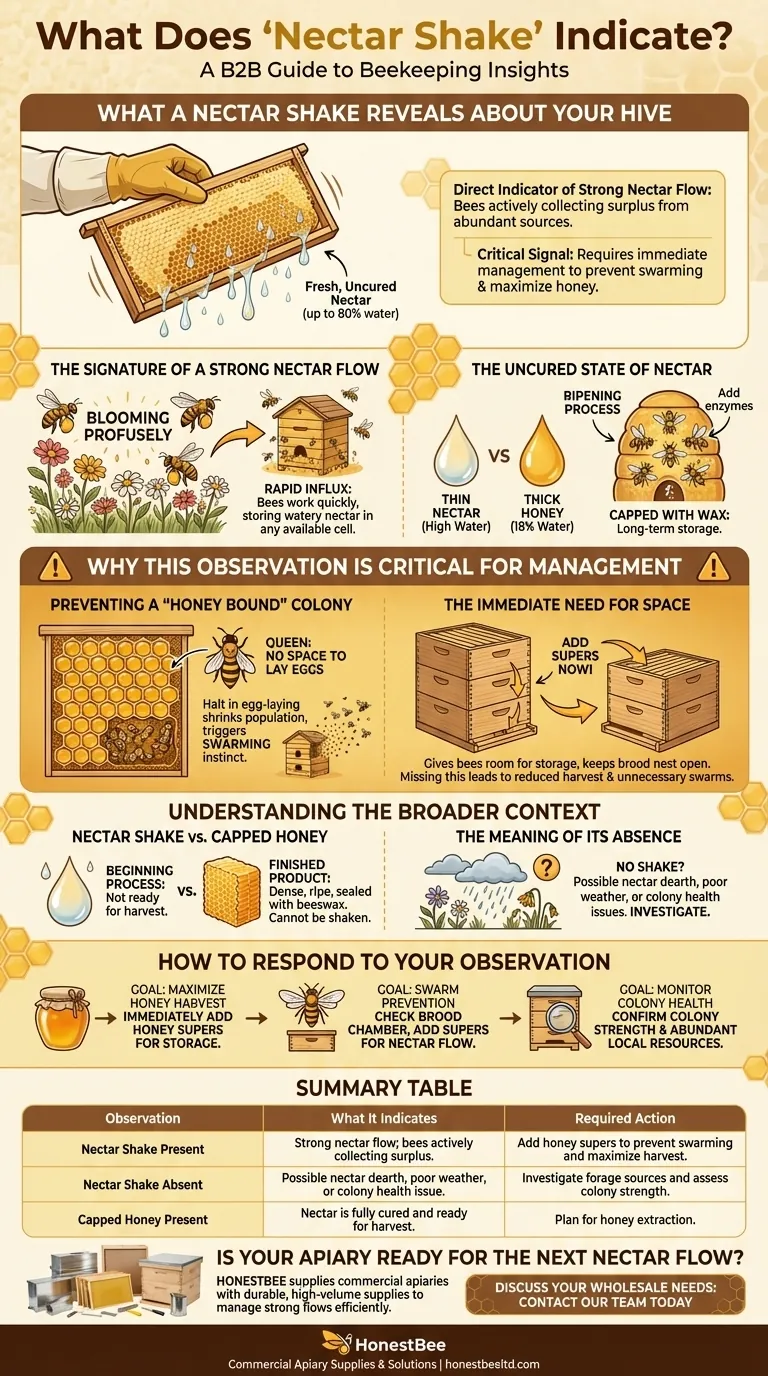
Related Products
- Plastic Honey Gate Spout with Wing Nut for Beekeeping Honey Bucket
- Economy Honey Homogenizer Mixer and Melting Machine for Beekeeping
- Stainless Steel Manual Honey Press with Guard for Pressing Honey and Wax
- Stainless Steel Honey Press Wax Press with Tank
- HONESTBEE Premium Italian Style Hive Tool with Hardwood Handle
People Also Ask
- Why is it important to replace the lid of the container immediately after harvesting? Prevent Honey Robbing & Colony Collapse
- How long does honey flow last? Master the 2-Week Window for Maximum Harvest
- Can raw honey be filtered? Unlock the Truth About Processing & Purity
- How can honey residues be removed? Use Warm Water and Soap for Easy, Chemical-Free Cleaning
- How does higher moisture levels affect microbial growth in honey? It's the primary cause of fermentation and spoilage.





